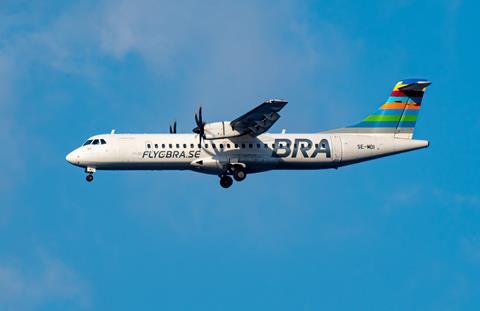Swedish carrier Braathens Regional Airlines (BRA) is to supply turboprop aircraft to ZeroAvia for conversion to hydrogen fuel cell power as part of an agreement to develop zero-emission routes in the northeast of the country.
Also included in the four-party agreement are the operator of Skelleftea airport, located around 335nm (620km) northeast of Stockholm, and municipal energy supplier Skelleftea Kraft.

Under the pact, BRA will provide aircraft for future demonstrations and to explore commercial routes, says ZeroAvia.
The partners will evaluate the use of both the 600kW ZA600 powertrain, designed for 9-19-seaters, and the more powerful 2,000kW ZA2000, for 40-80-seaters. Service entry is targeted for 2025 and 2027, respectively; no timeline for the demonstration effort has been released.
At present BRA operates 14 ATR 72-600s on routes across Sweden, Finland and Denmark, chiefly from its Stockholm Bromma hub. ZeroAvia says the ZA2000 will be suitable for both ATR twin-turboprop models.
Ulrika Matsgard, BRA chief executive, says the agreement will help the carrier meet its goal of achieving net-zero international flights by 2045.
“We see hydrogen-powered aircraft as one important solution for international flights in Europe. It’s also important for us to contribute to initiatives started here in the Nordics.”
BRA has previously signed a letter of intent for the hybrid-electric ZA-30 aircraft being developed by Swedish firm Heart Aerospace; it also sits on the airframer’s customer advisory board.
As part of the ZeroAvia agreement, Skelleftea airport will investigate the infrastructure required to support hydrogen-powered flights, while Skelleftea Kraft will analyse the potential for the production of green hydrogen from renewable power sources.
ZeroAvia recently completed a third test flight of its ZA600 powertrain on a modified Dornier 228 aircraft. The twin-turboprop ran solely on electricity for an undisclosed period during the sortie.































